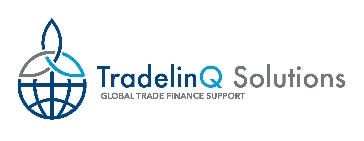| 16-02-2021 | Carlo de Meijer | treasuryXL
Blockchain is gaining growing attention in the Treasury world. Corporate treasurers are intensively looking at blockchain use cases to improve the effectiveness of their treasury management activities.
Notwithstanding the various benefits for corporate treasuries, there is still a great reluctance to adopt blockchain technology in their treasury departments. And that for various reasons. The technology is still immature, most of the projects are still in the conceptual phase while tangible real-world blockchain applications for the corporate treasurer’s day-to-day activities are still scarce. But that is – slowly – changing. A growing number of tangible treasury solutions are moving forward and being brought to the market. And there is increasing awareness amongst blockchain solution providers to come up with more integrated smart treasury solutions.

Complex treasury environment
Today’s business environment for internationally operating corporates is highly complex from a treasury point of view. These corporates have undergone many transformations in their treasury organisations triggered by technology innovations, regulatory initiatives and changed client behaviours.
In order to gain greatest visibility over their business critical functions and reach greater strategic control, corporate treasurers are significantly increasing their spending on treasury technology and innovations, to speed up and streamline their company’s cash, liquidity, risk and working capital management. Key challenge is to obtain consolidated real-time insight in group-wide multi-currency cash positions across a fragmented banking network in a timely manner, and manage credit facilities across all bank accounts of the group. Today’s model of international correspondent banking thereby strongly limits the ability to manage cash in a real-time environment.
As a result many corporate treasurers are still mainly using manual processes for their global activities. Especially the world of international payments looks cumbersome. They are slow, expensive and hard to track. Operating in multiple currencies has a substantial impact on the operational capabilities of treasury teams, and on the treasury’s ability to work efficiently.
From isolated proof-of-concept projects ……
The emergence of new technologies such as blockchain would enable corporate treasurers to take smarter, more data-driven approaches to core processes and better support the strategic side of the business.
During the past few years we have seen many blockchain Proof of Concept (PoC) trials for various use cases in corporate treasuries. Corporate treasury-related areas with potential use cases for blockchain range far and wide. From activities such as cross border payments, trade finance, electronic bank management, reconciliation, data storage and smart contracts to supply chain management, KYC, financial reporting, regulatory compliance intra-day liquidity management and cash management. But they mostly remained in the proof-of-concept stage. A majority of these projects have not even gone beyond the testing phase. And those that have made it and past that stage are yet to see extensive usage. Besides that most of the blockchain-based applications are focused on single parts of the treasury activity. They are mostly isolated and are not interoperable – so do not communicate with each other.
……. to practical treasury-focused Blockchain solutions
Blockchain development is however entering a new phase. Slowly, but definitely, the focus of many blockchain developers and providers is now turning from proof of concept projects to proof of work trials and further to the creation of more practical, treasury-focused blockchain solutions. Thereby they are trying to solve the various challenges such as interoperability, scalability etc. As global trades evolve and become more intertwined, we are also seeing the upcoming of collaborative blockchain models that can streamline and automate complex processes – like many aspects of treasury, thereby bypassing the cumbersome correspondent banking system.
Over time, a growing number of authentic real-world blockchain-based solutions – worthwhile looking at – have been introduced thereby using collaborative models like Ripple (global payments), R3 Corda (data management), Marco Polo (trade finance) and We.Trade (trade finance) to name a few.
Adjoint’s Smart Treasury
One of the most interesting recent blockchain offerings for corporate treasurers is Smart Treasury launched by Boston-based fintech Adjoint. Adjoint has combined blockchain technology with related smart contracts and APIs (or application programming interfaces) to create a solution that aims to dramatically speed up settling intercompany transactions in a secured way while significantly reducing the costs.
Table 1 Key features of Smart Treasury
Adjoint’s Smart Treasury is implemented as an overlay and should be seen as a multi-bank, multi-currency virtual account platform for real-time gross settlement and continuous reconciliation. This should allow corporate treasurers to untap liquidity in their various subsidiaries’ bank accounts thereby improving the liquidity management of the corporate treasurer.
Smart Treasury does not seek to replace existing ERP and TMS systems but rather compliment them by using APIs and by speeding up transaction settlement so that the data is much more timely and secure. Thereby pushing and pulling data to connected enterprise (ERP) and treasury management systems (TMS), and creating a real-time window to treasury management. Workflow might be streamlined across various use cases, and can be automated — such as for generating international transfers, calculating accrued interest, generating invoices for a loan payment, and submitting to the systems of records to ensure accuracy and reconciled data.
What may Smart Treasury bring?
The Adjoint Smart Treasury solution could bring a number of important benefits for the corporate treasurer thanks to greater transparency, improved efficiency in current treasury processes, reduced risk and as a result much lower costs.
Table 2 Benefits of Smart Treasury
First of all Smart Treasury will contribute to improved liquidity management thanks to greater transparency, allowing greater control over key treasury workflows. It may enable real-time insight in a corporate’s liquidity position and in how quickly they can provide liquidity to the corporate. Treasurers may see balances across the corporate group, across multiple entities, corporate departments and banks (accounts), in different geographies, and at any point in time. Via using Smart Treasury, this visibility may expand to partners, subsidiaries, vendors and customers allowing them access. The insight gained may further help drive more reliable cash flow forecasts for corporate treasurers.
Using Smart Treasury may significantly reduce current complications in the various treasury processes, including cross-border payments and billing. Using smart contracts could thereby streamline present cumbersome processes and eliminate costly third-party transactions. It allows tracking transaction status and confirmations in real-time, thanks to the greater transparency brought about by blockchain technology between the various players. As a result such transfers can be done much quicker and in some instances even instantly, thereby optimising the whole reconciliation process across various subsidiaries ERPs in terms of time spent and manual effort.
By removing the long chain of disintermediation, Smart Treasury allows outside companies within the supply chain to pull relevant information directly from the blockchain with no settlement network in between. This may create significant collateral savings thanks to shortened (or even instant) settlement cycles. Intra-group obligations may be settled instantly and at no cost. Smart Treasury will also enable full-auditability of transactions, thereby realising greater savings in both time and costs. Such immutable auditable record of transactions may for instance provide real-time ownership of underlying cash, so there will be no double spending of cash. Also intra-company loans are auditable “for arms-length transaction history” by time-stamping reference able FX conversion rates.
Smart Stream can help corporate treasuries improve risk management through data redundancy, auditability and smart-contract permissions. As the credibility of debtors and creditors is supposed to be known at all participants it will contribute to more security, while blockchain will also enable secure data storage across nodes to prevent a single point of failure. The transactions’ regulatory and compliance requirements are automatically satisfied by smart contracts, and application programming interfaces (APIs) transfer information and data between siloed corporate entities and their banks and data providers.
But also from a strategic point-of-view, Smart Treasury could bring a number of great benefits. Having a clear and real-time picture of assets and cash flows, finance has the ability to make strategic investments in a shorter period of time, helping to capitalize on potential investment opportunities and evaluate important future transactions, thereby expanding the types of transactions that can be done. In international operating companies, smart contracts may help the treasury play a critical role in successfully conducting business overseas. All these improvements could ultimately lead to a firm reduction in costs. Large savings could thereby be got from transaction costs and labour costs (esp. back office), while corporates could significantly reduce fees and costs to third parties.
Forward thinking
Adjoint’s Smart Treasury is a very interesting proposition. Some see this blockchain-based solution as a game-changer for corporate treasuries. If well used it could bring great benefits while solving a number of present challenges.
But Smart Treasury however will not be the only proposition in this field. Still, looking further into the future, we will see the arriving of more collaborative global and interoperable blockchain networks offering more mature real-world applications that will meet the actual challenges of scalability, interoperability, and as a result lead to greater confidence at and more mainstream adoption by corporate treasures. Treasurers would thus do well to keep up-to-date with new solutions that may leverage this blockchain technology, bringing process efficiencies and improve their new role, that has become much more strategic.
Table 1 Key features of Smart Treasury
- Auto reconciliation
- Virtual accounts
- In-house self-service bank
- Smart Treasury Dashboard
- Smart contracts
- API integration with ERP/TMS systems
- API integration with banks
Table 2 Benefits for corporate treasuries
- Optimize liquidity management
- Optimize reconciliation process
- Shorten settlement cycle
- Full auditability of transactions
- Improve risk management
- Strategic benefits
- Cost reduction

Carlo de Meijer
Economist and researcher

















